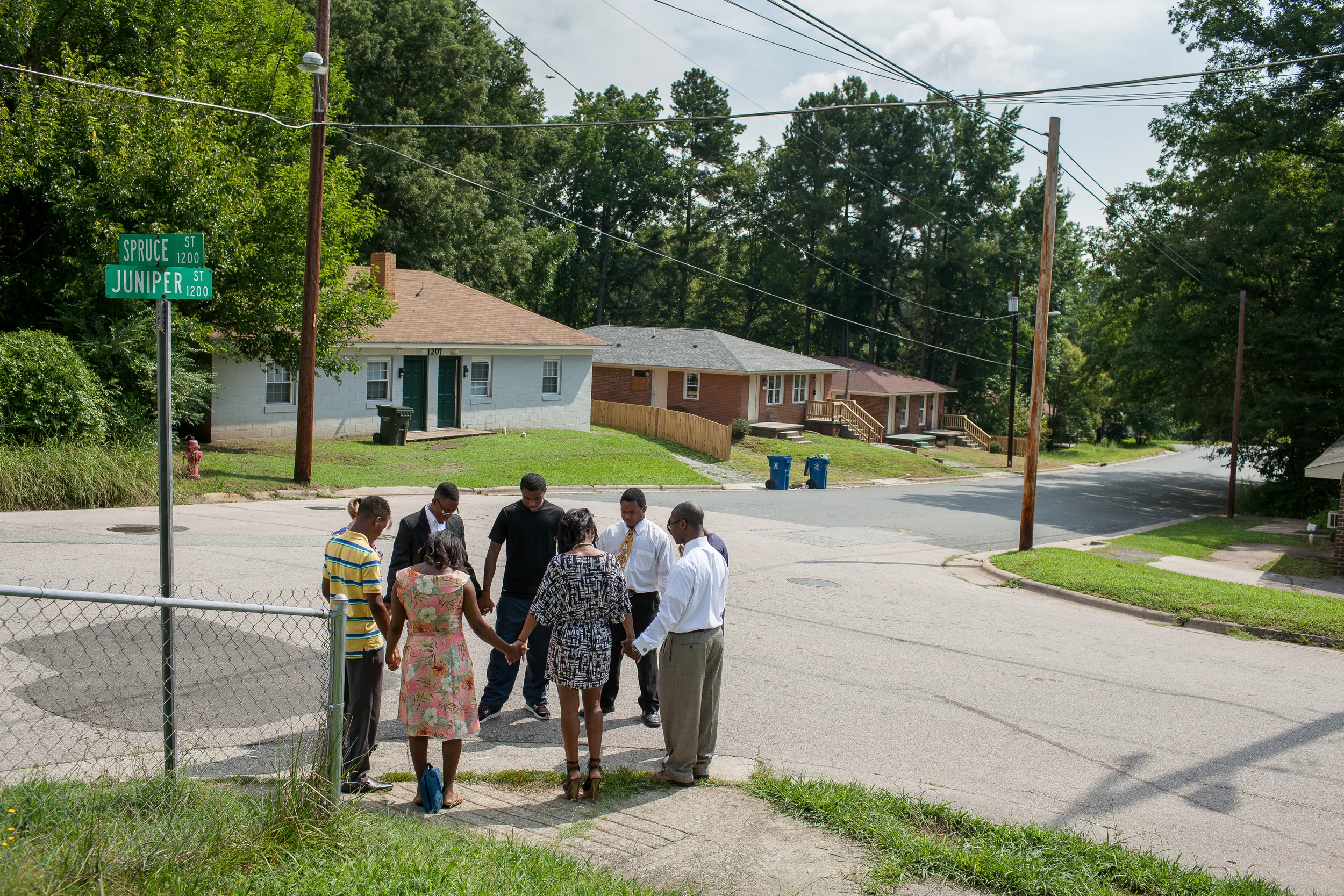A Few Words From the Photographer
Justin Cook on the history of this project
Way back in 2005, when I was a photojournalism student at the University of North Carolina at Chapel Hill, an afternoon ride-along with the Durham Police turned into intimate access to one of their gang resistance units, where I practically "embedded" myself and photographed them most nights for a year. In that time I saw a spectrum of humanity and insanity: street cops who were often pushed to the edge by the work they loved; kids killed in their prime, and written off by an indifferent public as black and brown and deserving of their fate; their grieving mothers who would gladly trade places with their slain children; and an incensed community that formed in the face of violence. Trauma threaded us together.
I began photographing Joslin Simms in 2006 after her son, Ray, was shot to death. His killer has never been caught, and her grief is fathomless. But I graduated soon after we met, and packed up my things and moved around the country to different newspaper internships and jobs. But I couldn't pack away the friendships I had formed. Life isn’t the same after your child is murdered; mine isn’t the same after staring into the abyss it leaves behind. I kept in touch, visited and made pictures when I could and knew I'd return one day. I got bored and disillusioned with the daily newspaper grind, quit and moved back in 2011 to freelance and delve deeper into what had startled me in 2005. I realized how much Durham was changing into a cultural center since I had been away. But at what cost?
Since then I've explored the idea of segregation here in Durham, and how it is expressed through violence, incarceration and urban renewal. I say segregation because the racism at its root is our American disease; we wring our hands over it, but we mostly just treat the symptoms. Through the years I've somehow found myself in the middle of things, trying to be empathetic to contrasting communities and groups that are often at odds with each other. I've let their own understanding of their struggles guide the images. I've tried hard to quiet my own voice and amplify the voices in these communities. I don’t need to give them a voice; they have one. I don’t need to humanize them; they are human. We just need to be better listeners. We need to actually hear.
Recent high profile police shootings of unarmed black men have seized global attention. This police violence, the collective suicide of young black men who shoot each other, mass incarceration and urban renewal are inextricably linked. They are all symptoms of segregation. They recognize a plain fact: that America was never meant for African-Americans, that the system doesn’t always work for them, and their hard-fought freedom is flimsy.
But what can we do? James Baldwin once wrote: “The price of the liberation of the white people is the liberation of the blacks—the total liberation, in the cities, before the law, and in the mind.” White America never fully liberated African-Americans and we haven't liberated ourselves from ourselves either. The country we built is functioning as intended. But a house with a crooked frame can’t stand. Racism may be the impossible crack in America’s foundation, but the crack is in plain sight. We must treat the cancer at the center of American violence and not just the symptoms. White saviorism can’t fix these communities, but white folks can look in the mirror and we can clean up our own house.
I love, deeply, the people I've worked with, and our relationships go beyond the camera. Joslin, for instance, is like a mother to me now. But our friendship is no substitute for justice. It's fate that our paths collided, and we want our work to help catch whoever killed her son and encourage new leads in Durham’s many cold homicide cases. We hope these images will celebrate Durham, but also challenge us to create the best Durham for everyone.

